Max-Joseph-Platz is one of the most impressive squares in Munich, bordered by grand buildings. In the square stands a large monument dedicated to Maximilian I, the first king of Bavaria.
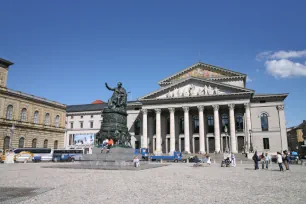
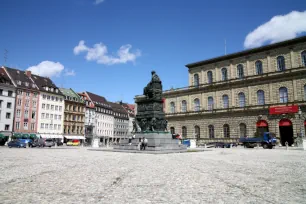
In the 1820s, when architect Leo von Klenze was still working on the Odeonsplatz, king Ludwig I ordered his court architect to create yet another square, this time right near the Residenz Palace.
Von Klenze designed grand buildings along the new square. At the north side he built a new annex for the Residenz, the Königsbau. On the east side, he rebuilt the opera house and added a monumental neoclassical facade. On the south side von Klenze erected the Törring-Jettenbach Palace, now the Palais an der Oper.
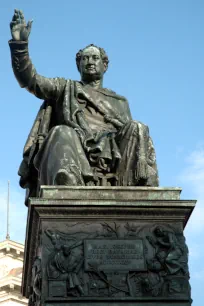
Statue of king Maximilian I
The square is named for the first king of Bavaria, Maximilian I Joseph, whose bronze statue has a prominent place at the middle of the partly pedestrianized square. The statue, designed by Leo von Klenze, shows the king in Roman garb seated on a Roman style chair.
King Maximilian wanted to be shown standing, and he rejected the design, but after his death his son Ludwig decided to approve von Klenze’s design. The statue was created in 1835 by sculptor Christian Daniel Rauch and officially inaugurated on October 13 of that year.
The statue is placed on a large pedestal, which is abundantly decorated with reliefs. Right below the king are four panels that depict science, religion & arts, agriculture & justice, and the creation of the Bavarian constitution in 1818. At the bottom of the pedestal are four lions seated on each corner.
Residenz Palace
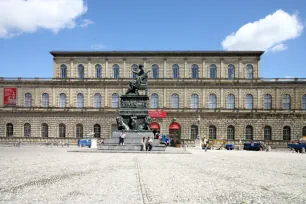
The Königsbau – the south section of the Residenz Palace – was built between 1826 and 1835 by Leo von Klenze, who, on the request of king Ludwig I, modeled it after the Palazzo Pitti in Florence.
The Königsbau is home to the Schatzkammer, the treasury where the jewels of the Wittelsbacher dynasty are kept. Another highlight is the Nibelungensäle, decorated with large wall and ceiling paintings.
Nationaltheater
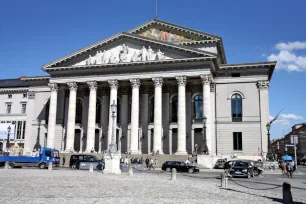
The architectural highlight of the Max-Joseph-Platz is the Nationaltheater, Munich’s grand opera house. The opera house was built between 1811-1818 by architect Karl von Fischer.
Just five years after its completion, the opera house burned to the ground. It was rebuilt two years later by Leo von Klenze, who added the monumental neoclassical portico. The theater building was destroyed in 1943 during an allied air raid and rebuilt once again in 1958-1963.
The Nationaltheater is just as impressive inside as it is outside. The plush circular auditorium has five tiers with seating for more than two thousand people.
Palais an der Oper
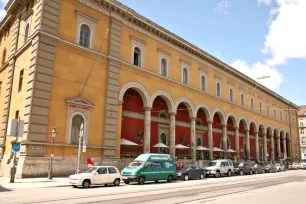
The Italianesque building that borders the Max-Joseph-Platz to the south is the former Törring-Jettenbach Palace. The palace was originally built in the eighteenth century for count Ignaz von Törring. In 1825 the north facade facing the new Max-Joseph-Platz was remodeled by Leo von Klenze, who created a Florentine style loggia.
In 1834 the postal service purchased the palace, and it reopened in 1839 as the city’s main post office building. After the German post office left the building in 2009 it was converted into a multifunctional complex known as the Palais an der Oper.

